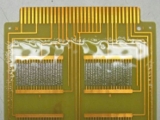Authored By:
Karl Seelig and Timothy O'Neill
AIM, Cranston, RI USA
Summary
As the proliferation of modern day electronics continues to drive miniaturization and functionality, electronic designers/assemblers face the issue of environmental exposure and uncommon applications never previously contemplated.
This reality, coupled with the goal of reducing the environmental and health implications of the production and disposal of these devices, has forced manufacturers to reconsider the materials used in production.
Furthermore, the need to increase package density and reduce costs has led to the rapid deployment of leadless packages such as QFN, POP, LGA, and Micro-BGA. In many cases, the manufacturers of these devices will recommend the use of no clean fluxes due to concerns over the ability to consistently remove flux residues from under and around these devices.
These concerns, along with the need to implement a tin whisker mitigation strategy and/or increase environmental tolerance, have led to the conundrum of applying conformal coating over no clean residues.
Conclusions
This writing is a consolidation of hundreds of tests and material combinations. The matrix of residues and available coatings would be too large to contemplate. The data has been edited to present key findings of collected information and provide practical guidance for engineers considering deploying this technique for their assemblies.
Based on our findings, we have concluded that conformal coatings can safely be used over no clean flux chemistry for many types of assemblies. It is imperative that compatibility testing be performed to ensure the coating provides the intended protection and meets the mission profile of the assembly. The incorporation of low standoff devices and the ability to completely remove water soluble organic residues is driving more assemblers to consider a no clean process. The risk assessment of water soluble versus no clean in these applications consistently favors no clean.
The cost savings in decommissioning the wash process and equipment is another major reason for migrating to no clean chemistries. Finally, as conformal coating continues to be the only accepted practice for tin whisker mitigation, along with the looming expiration of the RoHS exemption, we predict no clean chemistries and the subsequent coating of the resulting residues will become increasingly prevalent over time.
Initially Published in the IPC Proceedings
|


